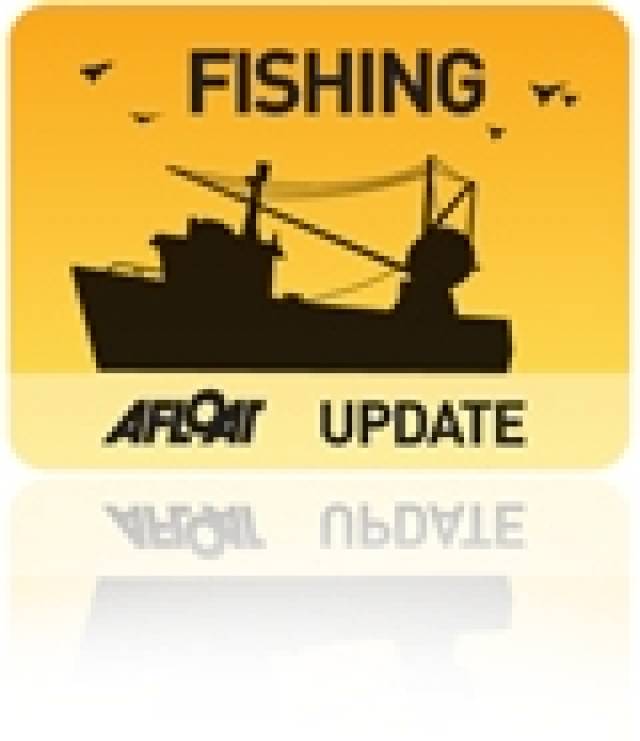#mackerel – Following years of disagreement and often bitter dispute between the countries fishing on the annual €1billion Mackerel stock in the North East Atlantic, a three party five year agreement involving the EU, Norway and the Faroe Islands has been reached today in London. This agreement addresses the management of Mackerel by the three parties in the North East Atlantic. This Agreement was only reached after particularly intensive negotiations over the last eight weeks. Iceland is not party to this agreement.
Minister for Agriculture, Food and the Marine, Simon Coveney TD today said "I have always supported a deal that would bring an end to the irresponsible and excessive fishing of mackerel stocks that we have seen over the past five years. This new five year agreement, which is certainly not ideal, does ensure that in line with the EU and Norway, the Faroese will be subject to fixed quotas which will protect against the previous dangerously high levels of fishing and help to secure the long term sustainability of this stock, which is of vital importance to Ireland." .
The Minister also said "I welcome the fact that under this Agreement Iceland will get no access to EU Waters to fish Mackerel and this was always an important principle for myself and for the Irish Fishing industry to secure as part of any agreement in order to protect the markets for Irish fishermen. I also welcome the fact that Norway got no additional access to fish Mackerel in EU waters. In addition, I welcome the fact that the Quota of Mackerel available to Irish Fishermen to fish this year on foot of this agreement will increase by over 60% from the current 65,000 tonnes to 105,000 tonnes." Mackerel is Ireland most valuable fishery.
Minister Coveney added that "While clearly disagreeing with aspects of the deal, I always recognised the importance of bringing the Faroes Islands into an agreed and responsible management arrangement of the mackerel stock with the EU and Norway. However, I was disappointed with an aspect of the final outcome which gave the Faroe Islands an increased 12.6% share of the stock and set aside a further 15.6% for Iceland, Greenland and Russia. I consistently argued at Council and throughout these negotiations that the levels being proposed for these parties were too high and on that basis I could not support the overall deal. The European Commission and the other EU Mackerel Member States were willing to accept the granting of those levels of share to Iceland and Faroes. I am relieved that we secured agreement that Norway will proportionally share with the EU the burden of the allocation of these quota shares and this sharing of the burden was a critical requirement demanded by Ireland."
The Irish industry, represented at the negotiations by the Killybegs Fishermen's Organisation, has been fully and consistently involved in the negotiating process working closely with other impacted fishermen's organisations to influence the negotiations. Throughout the lengthy process, they have provided sound advice on the impacts of proposals and have indentified some of the key elements needed in order to protect to the greatest extent possible the interests of the Irish industry.
The parties to the agreement agreed not to participate or promote a commercial fishery for mackerel by Greenland. Greenland recently announced a new "experimental" fishery of 100,000 tonnes. Ireland fully supported the Commission in its view that such an amount could in no way be regarded as "experimental" and was in fact a new unregulated commercial fishery. The agreement opens the way to sanctions being taken against any country responsible for unsustainable fishing of mackerel outside this agreement.
Minister Coveney said "I have worked closely with Sean O Donoghue, the Irish industry representative throughout the negotiations and have at every opportunity worked to protect and advance the interests of the Irish Fishing industry in these negotiations. In line with the views of the Irish industry, I was prepared to agree to shares for both Iceland and Faeroes that would, in my opinion, have been fair and balanced. In the agreement, the parties set shares for Faroes and set aside a portion of the total catch for Iceland and others that are higher than I could support. That said, I am pleased that working closely with the Irish industry, we successfully kept large Icelandic vessels out of our waters and that the increases in shares will be borne proportionately by the EU & Norway. The agreement also set clear boundaries for any party fishing for mackerel outside of this agreement, and I consider that this is a critically important achievement. It will allow the EU to pursue through sanctions irresponsible fishing by any non contracting party.
The Minister went on to say "For the first time in five years the Irish fleet will have a greater degree of certainty and stability. The scientific indications are that this extremely valuable stock remains in good shape, and all the current projections are that this should continue. This situation together with this three party agreement should help to secure Ireland Mackerel fishing industry, which is vital to many coastal communities in Ireland. In any event, we will be working to improve Ireland position in the fishery at the conclusion of this short term deal."
The Minister concluded his remarks by thanking Commissioner Damanaki and her Commission staff for their tireless efforts to secure an agreement in difficult circumstances. "The Commissioner is a tough and able negotiator as I learned at fist hand during the Common Fishery Policy Reform process under the Irish Presidency last year. While we differ on significant aspects of this deal, I fully recognise her achievement in getting this three party agreement, which while far from ideal in some key respects, will provide some much need stability in this fishery"
































































